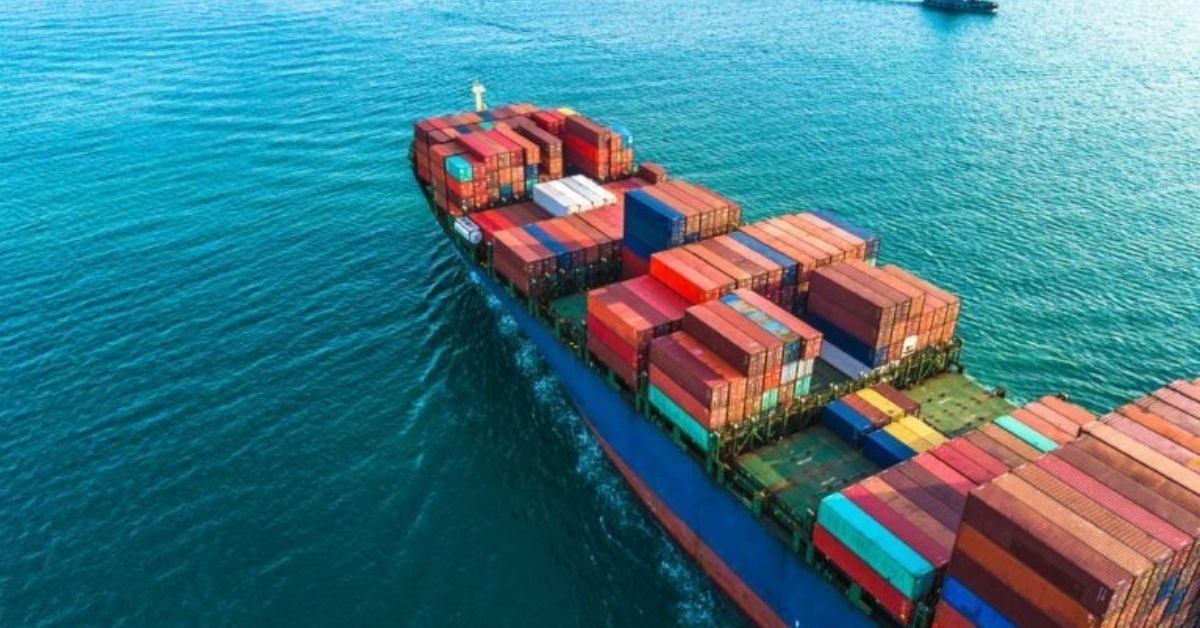Value chain disruptions are increasingly blamed for inflationary tendencies, although there are multiple other factors that can drive consumer prices up.
Since the summer of 2020, constant challenges caused by tighter capacity of boxes, ships, port infrastructure and hinterland transport have caused far reaching impacts on supply chains and national economies.
Continuous disruptions are increasing transport and logistics costs along chains with record high ocean freight rates as one of the results. Reports indicate that value chain actors tend to “optimise” for themselves, which only exacerbates the issues at system level.
This contribution addresses the need for visibility and transparency in vessel dynamics across the global shipping network to cope better with value chain disruptions.
Data sharing and time slots empower different parties through more informed decisions, flexible practices and plans.
The slot management concept ensures an expansion of the just-in-time (JIT) vessel arrival approach as well as enabling synchronisation across the global intermodal supply chain that consist of a stakeholder network of consumers, retailers, logistics providers and hubs, carriers, producers, manufacturers etc, as well as infrastructure, equipment, resources, and processes.
Choked maritime value chain drives inflation
Today’s intermodal supply chains are increasingly ‘disjointed’ logistics hubs. In particular ports, are insufficiently synchronised with ship journeys on the one hand and multimodal transport capacity in the hinterland on the other.
Record high ocean freight rates (figure 1) and rising costs of landside transport, such as road, rail, barges, as well as airfreight moves are a clear invitation to reassess current practices in goods flow management. The historically high freight rates combined with port congestion and other surcharges, plus rising dwell time charges in ports’ have led to a fivefold or even tenfold increase in transportation costs on some trade routes compared to pre-pandemic levels, thereby contributing to rising inflation.
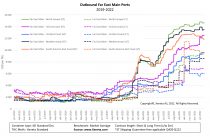
Figure 1: Development of long- and short-term freight rates for a 40’ container on selected trades outbound Far East main ports during January 1st 2019 to January 27th 2022
For a 40ft container unit (feu) filled with higher-value products, such as sports shoes or mid-priced clothing, with a combined retail value of $1m, ocean and port costs on the Far East-North Europe trade now represent 1.5-2% of shelf value.
This used to be less than 0.3%. UNCTAD’s Review of Maritime Transport 2021[1] estimates that the high levels of freight rates have led to a 1.5% global increase in consumer prices. The Kansas City Federal Reserve Bank estimates that a 15% increase in shipping costs leads to a 0.10 percentage point increase in core inflation after one year.[2] According to UNCTAD, ‘small island developing states’ are affected five times more strongly than the average increase, with a consumer price hike of 7.5%.
For voluminous low value products of $50,000/feu, such as low-end assembled furniture, the share of ocean and port costs in total retail value has mushroomed from 5-6% in 2019 to a hefty 30-40%. This has pushed retailers to consider a significant upward shelf price correction. High-value products are also affected, given that during the process of their production inputs are transported numerous times, and at each stage of the value chain higher transport costs add to the total production costs.
As UNCTAD’s Review of Maritime Transport shows, there are two types of products most strongly affected by high freight rates:
- Relatively low value goods, such as furniture
- Products that involve a deep supply chain, with several stages where transport is purchased (Figure 2).
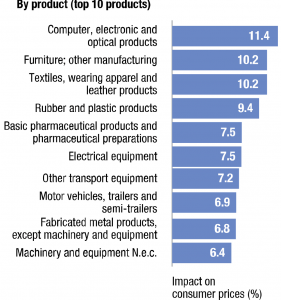
Figure 2: Simulated impacts of the container freight rate surge on consumer price levels, by product (UNCTAD Review of Maritime Transport 2021)
As regards differences between countries, it is interesting to note the importance of economies of scale. Smaller economies are affected more strongly by the surge in freight rates than larger nations (Figure 3).
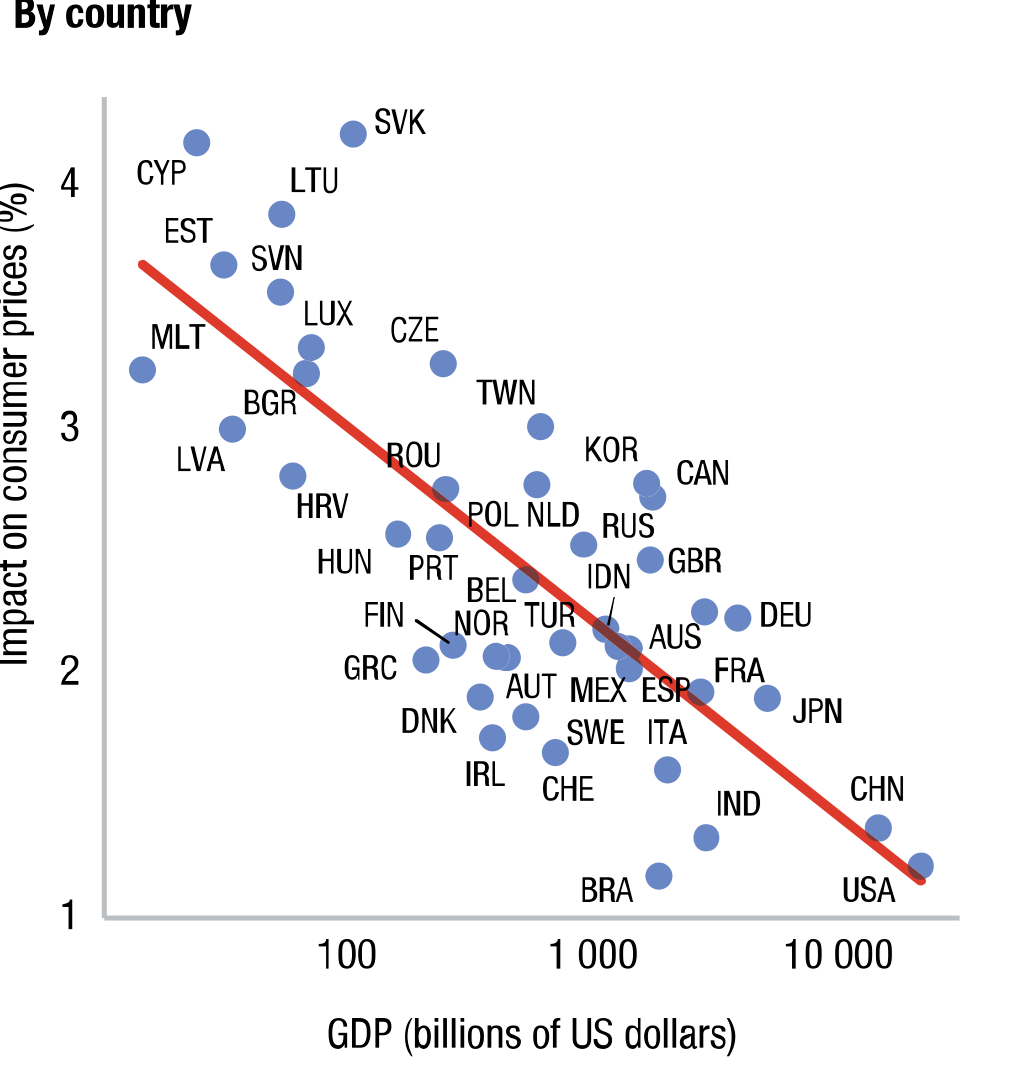
Figure 3: Simulated impacts of the container freight rate surge on consumer price levels, by country (UNCTAD Review of Maritime Transport 2021)
The severe and unpredictable delays of cargo lead to concerns among consumers that goods they wish to buy may not be available or run out of stock. This increases consumers’ willingness to buy goods at full retail prices rather than waiting for them to go on sale at a later stage. This also contributes to inflation.
Just the narrative of broken supply chains and exploding freight rates may raise the consumers’ acceptance of higher retail prices. Supply chains are complex, and the average consumer lacks a detailed understanding of the impact of increasing freight costs on specific goods.
The congested port is a global phenomenon
Many ports across the globe are facing extreme disruptions (see figure 4). These disruptions are also due to the decisions and behaviour of various supply chain actors. Reports indicate that some shippers are not picking up containers at the terminals, are holding empty containers very long or are treating ships waiting outside the port as ‘convenient’ storage facilities for their cargo. Shippers, carriers and ports are optimising their part of the chain in their best interest. While understandable, this may not be optional for the overall system.
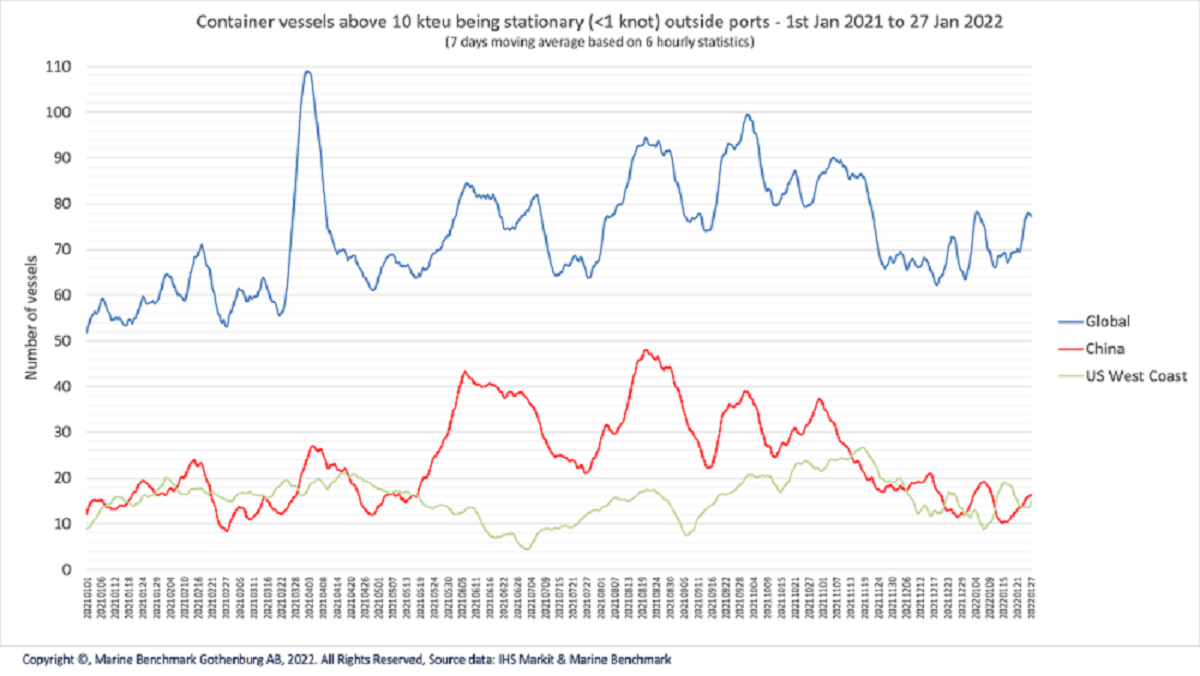
Figure 4: Number of containerships being stationary outside ports globally and outside China and US west coast ports between 1 January 2021 and 27 January 2022
The current port congestion reveals the shortcomings in infrastructure and resource capabilities at both the ship-shore and port-hinterland interfaces. Manning availability at ports and in inland transport have been questioned. Hinterland transport capacity and infrastructure is seen as insufficient, with driver shortages appearing as a bigger issue than tight supply of chassis and trucks.
But the situation is more complex than a simple capacity shortage of ships, containers, trailers, trains and vehicles, as the reasons for constrained port infrastructure are many, including Covid-driven temporary suspensions of port operations (mainly in China), factory closures creating supply shocks and stimulus packages fuelling consumer demand, particularly in the US, at a time when disposable income has not been going to leisure activities such as eating out and travel.
Reducing demand or expanding supply would deblock the chokepoints and bring a downward pressure on rates. But this will probably not happen before 2023/2024 when new ships are put into service, supply chain backlogs have been cleared and additional semiconductor capacity is established.
The driver shortage, however, may be here to stay until, at some point, autonomous vehicles may bring relief combined also with a more intense use of rail and inland barge transport.
Basically, the maritime industry has two options to reach a better normal. First, it can increase the pool of equipment and expand capacity which obviously takes time. Alternatively, the sector can introduce measures to handle more volume with the existing capacity which should reap results in the shorter term. In the longer term, we expect a combination of both solutions to materialise.
Slot management for better synchronisation
Adopting the concept of slot management can ease current pressures on costs and prices. As is the case for other practices grounded in the appointment economy,[3] the slot time is the unit of analysis, allowing us to move beyond coordination based on physical arrival and the principles of ‘first-come, first-served’.
A slot time provides each involved actor, on a fair and equal basis, with the opportunity to plan ahead, regularly monitor progress and coordinate their activities towards the common goal of satisfactory, predictable and timely delivery. At the same time, supply chain visibility for all those that need to know is improved, meaning fewer ‘nasty surprises’ necessitating adjustments at short or no notice.
We see opportunities in expanding the model of JIT shipping to cover a range of typical scenarios by delimiting arrival and departure slots. In this context, predictions of departure are important, as these provide an understanding of when the infrastructure being used for one ship can be made available for another.
Such expansion would utilise the slot time, incorporating both arrival and departure time, as the common denominator which involved actors could coordinate in relation to when a disruption occurs at port of origin or at port of destination. The driver would be to enhance capacity utilisation of ships and port infrastructure and cater for a high environmental sustainability.
Slot times as a foundation for maritime supply chain visibility allow cargo shippers to receive up-to-date information about possible delays and help shipping companies to make well-founded decisions on how to best serve their clients. The optimal speed and route to destination are decisions to be made by the shipping company and a ship’s captain based on the timing and possibilities that a port offers to serve the ship
Introducing slot time management will change the relationship between container shipping companies and ports. Contracts will need to be rethought and operating practices redesigned; information systems aligned and protocols harmonised. The solutions and bodies to drive harmonisation exist, at least partially. It is the belief or otherwise in the benefits of data sharing and data usage that will determine whether the maritime industry will move into this direction.
Informed by Maritime Informatics (www.maritimeinformatics.org), the maritime sector can take important steps to establish the foundations for enhanced predictability serving all parties equally rather than sub-optimised for one particular group.
Shipping costs rarely figure in economists’ inflation and GDP calculations and most companies are more concerned about raw materials and labour costs than transport. That might change as the current surge in container freight rates could increase global import prices by 11% and consumer price levels by 1.5% between now and 2023[5].
The longer the rates stay at a high level, the higher the risk that they will have a lasting effect on prices. However, despite the high rates and the severe operational disruption, all the five largest US container-importers with public accounts showed strong profit improvements in 2021, clearly sending a message to the carriers that their largest customers can afford rates in the longer term which are markedly higher than the pre-pandemic reality.
The surge in container freight rates is the result of the mismatch between soaring demand and reduced supply capacity, labour and equipment shortages and continued on-and-off Covid-19 measures and restrictions imposed by governments.
Shipping and logistics costs are expected to continue to rise, including fuel inflation, in 2022. Some industry insiders say high freight rates could even stretch into 2023. It’s likely that logistics will remain more expensive and not return to the low pre-pandemic level.
Resilience built into future supply chains comes at a price. Any move away from global just-in-time logistics towards increased buffer stocks has a price tag. Will shippers change their behaviour after experiencing a significantly disrupted market for one and a half years? Most likely, yes.
Although slot management is not the silver bullet to solve all maritime network problems, its data sharing aspect will bring a potential relief on costs and prices and more situational awareness, which can drive behavioural changes by the different stakeholder groups that may contribute to a more optimised and balanced system overall.
Introducing slot management in the maritime domain would pave the way to link all slots of arrivals and departures along the end-to-end multimodal supply chain, providing foundations for synchronised and sustainable supply chains (for more information on slot management).
Source : The Loadstar



